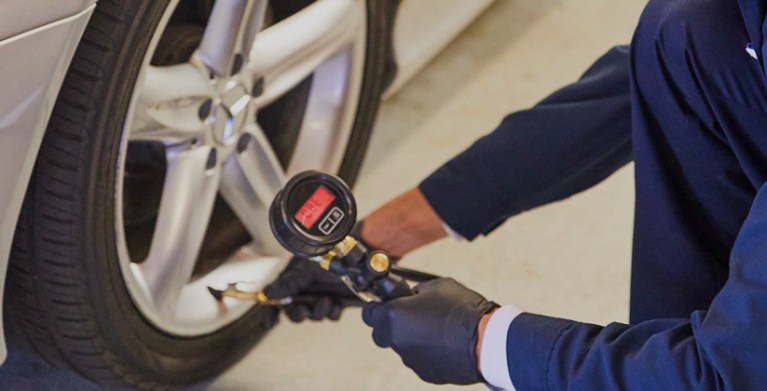Tire Repair Work Myths Debunked: Dividing Reality From Fiction
In the realm of automobile maintenance, tire fixing holds a substantial place, yet it is usually shrouded in misconceptions and false impressions that can cause confusion for automobile owners. Understanding the distinction in between truth and fiction when it involves tire fixing is vital for making sure both safety and security and cost-effectiveness. From the false impressions bordering patching versus connecting a punctured tire to the efficiency of numerous tire sealers, there are several essential locations where quality is needed to make enlightened decisions. Allow's shed light on some usual tire repair service myths and different them from the reality to encourage you with the expertise required to navigate this crucial aspect of lorry upkeep.
Common Tire Fixing Misconceptions
Eliminating widespread mistaken beliefs surrounding tire fixing is vital for maintaining road security and prolonging the durability of your automobile's tires. It is crucial to comprehend that not all leaks are developed equal; while some may undoubtedly require a tire substitute, the bulk can be securely repaired.
Another false impression is the idea that a DIY tire repair work set is an adequate remedy for all tire concerns. While these packages can be helpful for temporary solutions in emergency situations, they are not a permanent remedy and may not deal with the underlying issue (tire tracks morris il). Looking for the proficiency of a qualified tire service technician is constantly recommended to guarantee the security and stability of the tire

Can You Repair a Punctured Tire?
Repairing a pierced tire is a typical practice in the automotive sector, commonly carried out by specialist specialists following specific guidelines and criteria. Slits located on the step location of the tire are normally repairable as lengthy as they are within a certain size limitation and do not impact the tire's architectural stability.
It is vital to keep in mind that pierces website here near the sidewall or shoulder of the tire are normally not repairable because of security issues. Such locations undertake substantial click to read stress and flexing, making repair services undependable and potentially dangerous. In addition, if the leak is too big, going beyond the advised repairable size, or if the tire reveals indications of internal damage, it is more secure to change the tire entirely.
The Fact About Patching Vs. Connecting
When thinking about the repair work of a pierced tire, understanding the differences between patching and plugging is vital for making notified decisions relating to tire upkeep and safety and security. Patching entails repairing the tire from the inside, where a spot is applied to cover the puncture.
Myth: All Tire Sealants Work

When picking a tire sealer, think about elements such as the size of punctures it can efficiently repair, compatibility with tire pressure monitoring systems (TPMS), and whether it is risk-free for the tire product. Bear in mind, while tire sealers can be helpful in emergencies, they are not an alternative for proper tire treatment and upkeep.
Finest Practices for Handling Flat Tires
Because of the differing effectiveness of tire sealers, comprehending ideal techniques for managing punctures is essential for preserving roadway safety and automobile performance. When coming across a blowout, the very first step is to safely draw over to the side of the road, far from approaching traffic. Switch on risk lights to signal various other drivers of your scenario. It is recommended to apply the hand brake and this link place wheel wedges under the tires to prevent the vehicle from rolling. Next off, consult your car's manual to situate the extra tire, jack, and lug wrench. Before attempting to transform the tire, make sure that the location is flat and secure. Loosen up the lug nuts, raise the lorry with the jack, get rid of the lug nuts and blowout, and replace it with the spare tire. Tighten up the lug nuts in a celebrity pattern, lower the lorry, and safely tighten the lug nuts. Finally, stash the blowout, tools, and equipment, and bear in mind to check the spare tire's stress occasionally. Complying with these best practices can help you manage punctures efficiently and safely.
Verdict
To conclude, it is essential to separate reality from fiction when it concerns tire repair myths. Comprehending the reality about patching vs. plugging, the performance of tire sealers, and best techniques for taking care of blowouts can help make sure the safety and security and long life of your tires. By unmasking typical mistaken beliefs and following proper repair service guidelines, you can make enlightened decisions when it concerns preserving the health and wellness of your vehicle's tires.